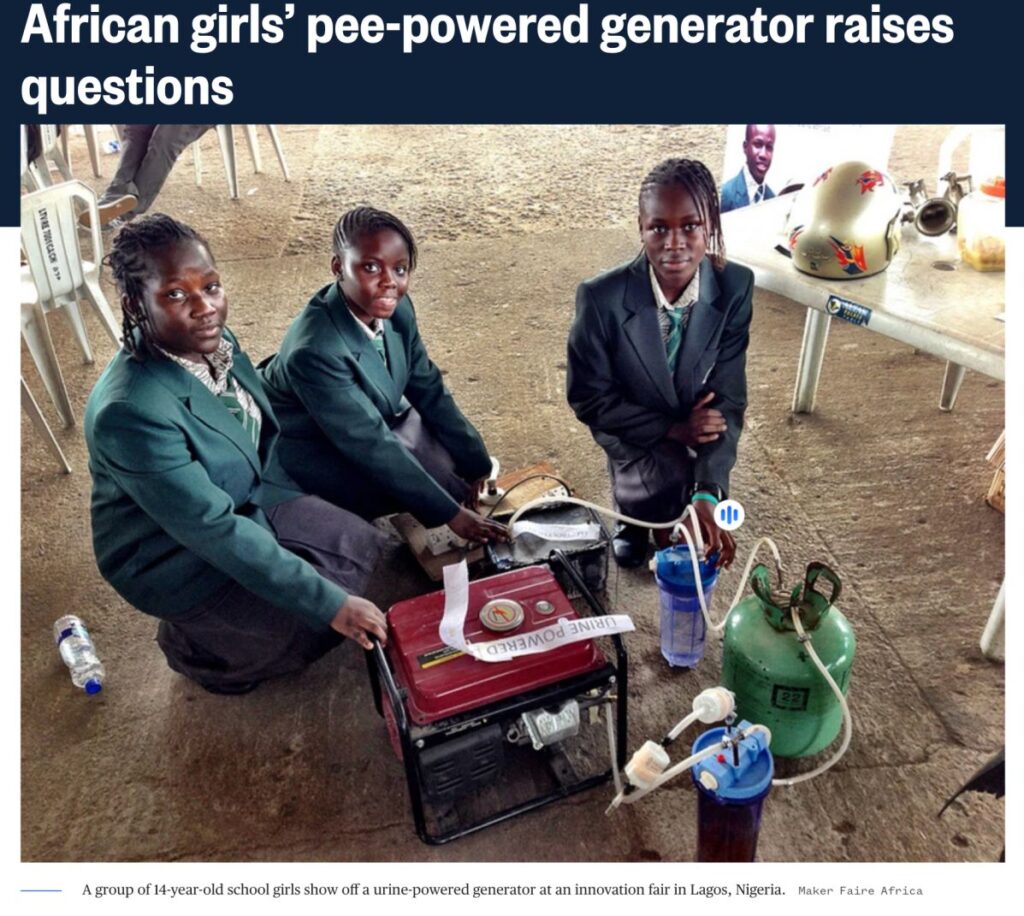A viral social media post (here, here, and here) claims that four Nigerian girls invented a generator that can produce six hours of electricity using just one litre of urine as fuel. Let’s verify the claim made in the post in this article.

Claim: Four Nigerian girls invented a generator that produces six hours of electricity using just one litre of urine as fuel.
Fact: In 2012, four Nigerian girls invented a urine-powered generator, but it cannot provide six hours of continuous electricity as claimed. A documentary on this invention shows it powering simple light bulbs or a wall light. Experts have noted that the system is inefficient and impractical for large-scale use, as extracting hydrogen from urine requires more energy than the hydrogen can produce. Hence, the claim made in the post is MISLEADING.
To verify the claim, we conducted a Google keyword search that led us to several media reports from November 2012 (here, here, and here). According to these reports, on 06 November 2012, at Maker Faire Africa—a science and technology festival—four Nigerian schoolgirls, Duro-Aina Adebola, Akindele Abiola, Faleke Oluwatoyin, and Bello Eniola, showcased a urine-powered generator. Their device used urine to produce hydrogen gas, which was then used to run a generator.

We also came across a 2015 documentary detailing their efforts, which brought the girls wide recognition. In the documentary, they explained that they chose urine as fuel because it is cheap, widely available, and often considered waste. Their generator works by electrolysing urine to produce hydrogen gas. The hydrogen gas is then purified through a water bubbler, dried using a borax solution, and stored in a tank. When needed, the stored hydrogen is used to power the generator, producing electricity while emitting only water vapour, making it environmentally safe. The invention won them international awards, scholarships, and recognition, demonstrating the impact of innovative thinking and perseverance.
The viral post claimed that the device can produce six hours of electricity, but it was not clear what load it could support during that time. The documentary also shows it powering either simple light bulbs or a wall light.
The exact power output and duration were not clearly demonstrated, leaving its real-world utility uncertain. While the Nigerian girls’ urine-powered generator was a creative and inspiring project, scientists note that it is not practical for large-scale electricity generation. Extracting hydrogen from urine required more energy than the hydrogen could provide, making the system inefficient. Additionally, challenges with hydrogen storage, safety, and corrosive byproducts from urine electrolysis further limit its practicality for everyday use. Gerardine Botte, inventor of the urea electrolysis process, called the girls’ project inspiring but warned that it cannot produce more energy than is used and suggested they work with an engineer to understand its practical applications. She added that the method is best suited for improving energy efficiency in wastewater treatment.

Based on available evidence, it is clear that the urine-powered generator by the four Nigerian teenage girls is not a recent invention and actually dates back to 2012, and as of September 2025, there have been no significant updates or advancements.
To sum up, the urine-powered generator invented by four Nigerian girls in 2012 cannot produce six hours of electricity using one litre of urine.



